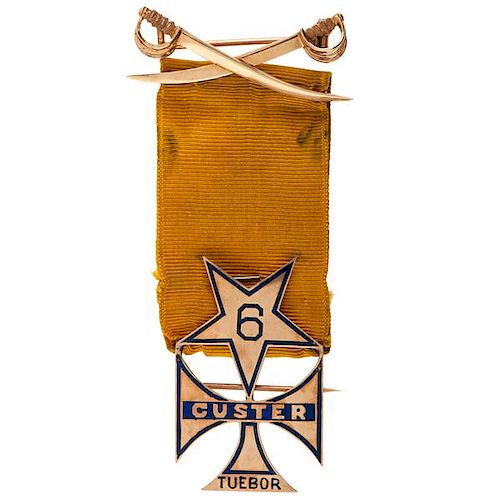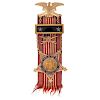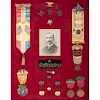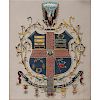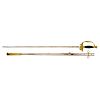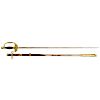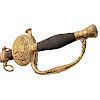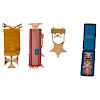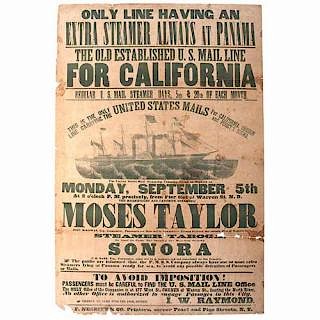Brevet Brigadier General James H. Kidd, 6th Michigan Cavalry, Exceptional Collection Featuring Custer 14K Gold Tiffany Badge, GAR Medals, Sword, & Pai
About Seller
6270 Este Ave.
Cincinnati , OH 45232
United States
With offices in Cincinnati, Cleveland and Denver, Cowan’s holds over 40 auctions each year, with annual sales exceeding $16M. We reach buyers around the globe, and take pride in our reputation for integrity, customer service and great results. A full-service house, Cowan’s Auctions specializes in Am...Read more
Two ways to bid:
- Leave a max absentee bid and the platform will bid on your behalf up to your maximum bid during the live auction.
- Bid live during the auction and your bids will be submitted real-time to the auctioneer.
Bid Increments
| Price | Bid Increment |
|---|---|
| $0 | $25 |
| $500 | $50 |
| $1,000 | $100 |
| $2,000 | $250 |
| $5,000 | $500 |
| $10,000 | $1,000 |
| $20,000 | $2,500 |
| $50,000 | $5,000 |
| $100,000 | $10,000 |
About Auction
Jun 10, 2016 - Jun 11, 2016
Cowan's Auctions dawnie@cowans.com
- Lot Description
Brevet Brigadier General James H. Kidd, 6th Michigan Cavalry, Exceptional Collection Featuring Custer 14K Gold Tiffany Badge, GAR Medals, Sword, & Painted Escutcheon
Lot of 23 items belonging to Brevet Brigadier General James Harvey Kidd (1840-1913).
Waiting for the Civil War to begin was “painful” for 22-year-old University of Michigan sophomore James H. Kidd and his peers. Many of them “kept their trunks packed and ready to leave [for the front] at a moment’s notice,” wrote Kidd [1]. The evening the Confederate army fired upon Ft. Sumter, an angry mob of students marched towards the Chancellor’s home. Even though the Chancellor appealed for cooler heads, many of the fists shaking in protest soon carried rifles on the battlefield. Kidd was more patient than his peers, however, and waited until the summer of 1862 to join the cavalry as an officer.
Kidd accepted a commission as a Captain on August 28, 1862. A few months later, he mustered into the 6th Michigan Calvary Company “E” under General Joseph D. Copeland. He and his fellow officers assumed a difficult task training men who “enlisted from love of country rather than from a love of arms” [2]. General George A. Custer took command in 1863 and had a tailor sew a uniform of black velveteen, with gold lace that extended from his wrist to his elbow, a wide-collared blue sailor shirt with silver stars sewn on and a red necktie around his throat. [3] Custer claimed it was so his men could see him in the field, but newspapers and superior officers viewed it as preening.
Kidd stood by his superior officer, and his exploits on the battlefield earned him several promotions. In May 1863, Kidd received a promotion to Major. Two months later, he was wounded at Falling Waters, Maryland. While recovering from his wounds, his regiment played a pivotal role in in defeating General JEB Stuart’s attempted cavalry thrust at Gettysburg. In the middle of the charge, Custer shouted "Come on, you Wolverines!" which became the rallying cry of the brigade. After their victory, the men idolized Custer. “We swear by him,” wrote Kidd of Custer to his father. “His move is our battle cry. He can get twice the fight out of this brigade than any other man can possibly do” [3]. In May 1864, General Custer recommended Kidd as Colonel. Kidd accepted the position and took command of the 6th in southwestern Virginia. He was wounded again at the Third Battle of Winchester in September, but upon recovery led his unit on a series of raids through the Shenandoah Valley, destroying millions of dollars of Confederate property. On June 15, 1865, he was brevetted Brigadier General for gallant and meritorious service and spent the remainder of his military service out West pursuing Sioux and Cheyenne Indians until mustering out at Fort Leavenworth on November 7, 1865. As a veteran, he was very active in the GAR, serving as post commander in his hometown of Ionia and as Commander of the Department of Michigan for a time in the 1890s.
After the disastrous defeat of his beloved commander at Little Big Horn, Kidd refused to believe that Custer had a “death wish” or that his hubris was to blame. He wrote in his memoir, “The true version of the massacre will remain sealed in a book until the dead are called upon to give up their secrets” [5].
The centerpiece of the collection is Gen. Kidd’s "Custer Valor Medal." The badge was designed by Custer while in the field in 1864 and produced by Tiffany & Co. to his exact specifications (the original sketch resides in the archives of the Little Bighorn Battlefield National Monument in Montana). The young General Custer was the sole arbiter of who should receive the award and had them individually commissioned at his own expense, resulting in slight variations between the handful of known examples. Made of 14k gold and blue enamel, it features a Maltese cross with "Custer" across the middle and the Latin motto "Tuebor" at the bottom, the motto of Custer and Kidd’s home state of Michigan meaning “I Will Defend.” Reverse is engraved "Col. J.H. Kidd / 6th Mich. Cav." The top of the Maltese cross morphs into a five-pointed star with a “6” representing Kidd’s 6th Michigan Volunteer Cavalry, and is suspended from a gold crossed sabers pinback by a gold cavalry ribbon. Kidd's pride in receiving the award is captured in a letter of appreciation published in the Detroit Advertiser and Tribune on June 17, 1865: “The gold in this badge is not more precious, it is not rarer, than the frankness, the generosity, the want of distrust which has always characterized your intercourse with me…The associations-Michigan Brigade Cavalry, its leader, Custer, his deeds and theirs are enough to make your gift one of inestimable value always”.
Among the other items is General Kidd’s GAR badge, of unusually high quality, made of 14k gold and with two-star, black enamel bar and 6th Cavalry hanger. Made by Jos. K. Davison, Philadelphia, and housed in the original case. Also a shadowbox frame, 20.5 x 24.5 in., containing a portrait of General Kidd, various buttons and insignia, and GAR reunion items including his Department of Michigan Commander’s ribbon from the 27th National Encampment, Indianapolis, 1893; Delegate’s badges from the 30th National Encampment at St. Paul, 1896, the 35th at Cleveland, 1901, and the 39th at Denver, 1905; and Department of Michigan badges from Buffalo, 1897, and Chicago, 1900.
Complementing the physical medals is an oil on canvas Civil War service escutcheon with hand-painted depictions of the medals and featuring a detailed record of Kidd’s service, including a list of all engagements, attachments, and promotions, the shoulder straps and insignia of his various units and ranks, and the Great Seal of Michigan at center, housed in period frame, 33 x 38 in. overall. Kidd’s medals are at bottom, including the GAR badge and the Custer medal offered as part of this lot, as well as the medal of the Military Order of the Loyal Legion of the United States and the Army of the Potomac. Between these is a transcript of a letter written by General Custer to Michigan Governor Blair, endorsing Major Kidd for promotion to Colonel of the 6th Michigan Cavalry. Dated June 3, 1864, it reads in part, “Michigan cannot boast of a more gallant and efficient officer than Major Kidd, and I am confident that his appointment as Colonel of the 6th would not only produce entire satisfaction in his regiment, but would serve to increase the high but well-earned fame of the Michigan Cavalry Brigade.”
Finally, a Springfield Armory-made general officer's sword. [1] James H. Kidd. Personal Recollections of a Cavalryman with Custer's Michigan Cavalry Brigade in the Civil War. Ionia, MI: Sentinel printing company, 1908. p 8. Accessed via https://babel.hathitrust.org/cgi/pt?id=yale.39002002938232;view=1up;seq=17 on May 3, 2016.
[2] Kidd, 45.
[3] Jeffery D. Wert. “George Armstrong Custer: Between Myth and Reality,” Civil War Times, March/April 2006. Accessed via http://www.historynet.com/george-custer on May 3, 2016.
[4] Wert, “George Armstrong Custer: Between Myth and Reality.”
[5] Kidd, 132.
Provenance: Descended Directly in the Family of Brevet Brigadier General James H. Kidd - Shipping Info
-
SHIPPING. At the request of the buyer, Cowan's will authorize the shipment of purchased items. Shipments usually occur within two weeks after payment has been received. Shipment is generally made via UPS Ground service. Unless buyer gives special instructions, the shipping method shall be at the sole discretion of Cowan's Auctions, Inc.. Cowan's is in no way responsible for the acts or omissions of independent handlers, packers or shippers of purchased items or for any loss, damage or delay from the packing or shipping of any property.
-
- Buyer's Premium



 EUR
EUR CAD
CAD AUD
AUD GBP
GBP MXN
MXN HKD
HKD CNY
CNY MYR
MYR SEK
SEK SGD
SGD CHF
CHF THB
THB